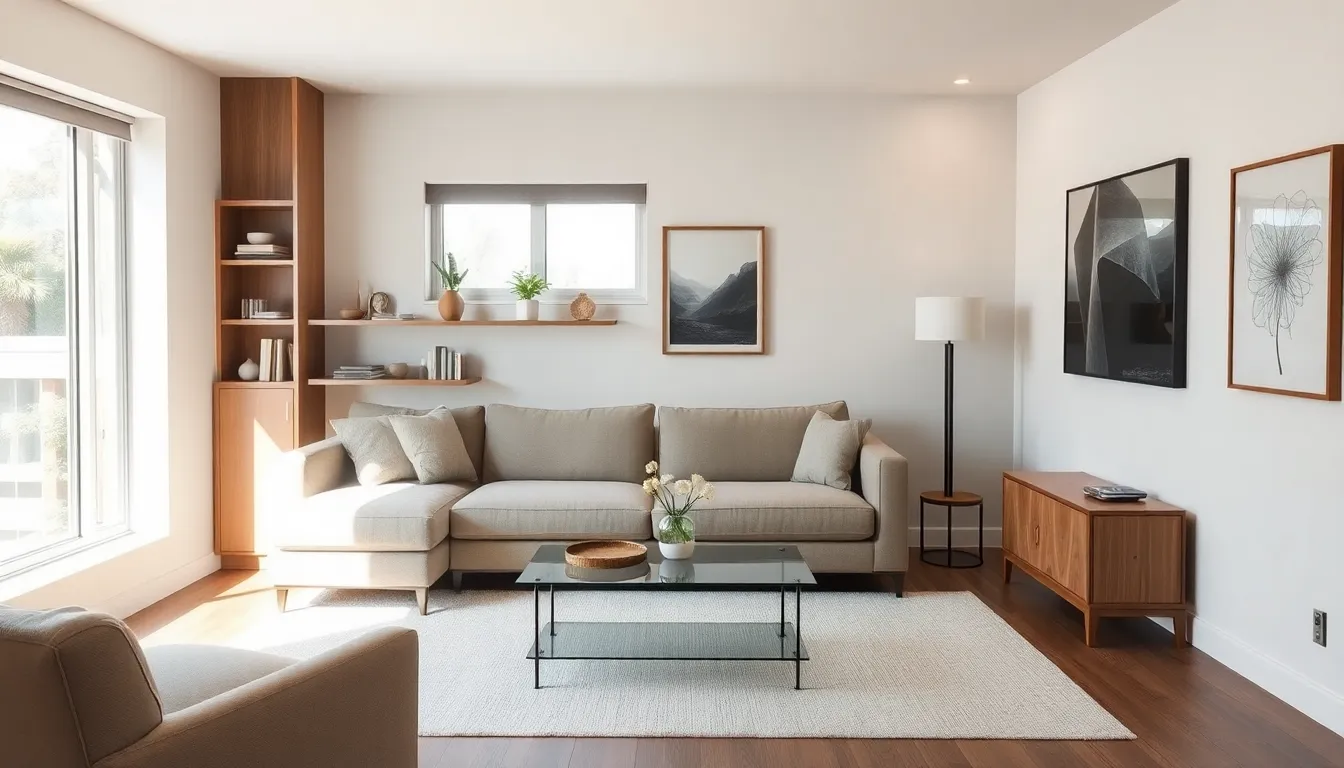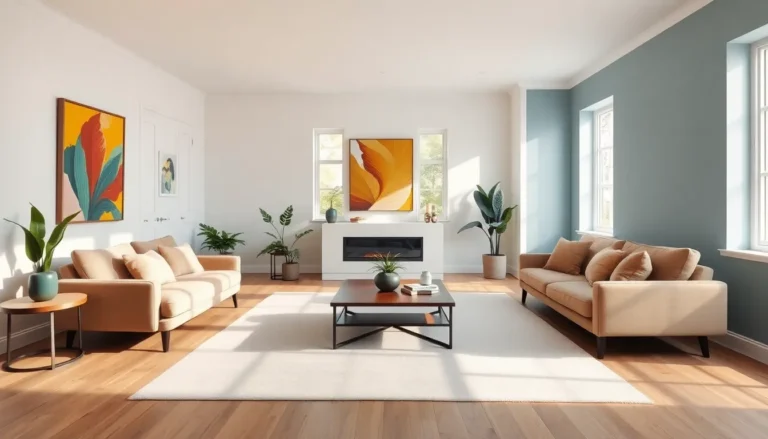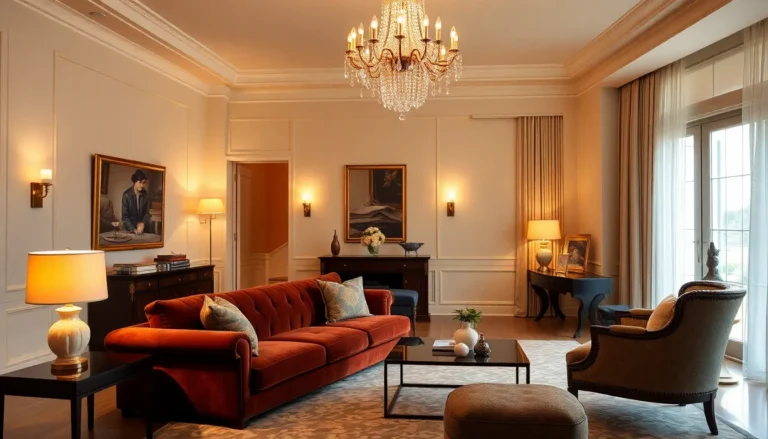Ever felt like your small living room is competing for space with your collection of unyielding throw pillows? You’re not alone. Small living rooms can sometimes feel like a high-stakes game of Tetris. But, with a sprinkle of creativity and some smart design choices, even the tiniest living spaces can be transformed into stunning retreats. So, how do you turn your cramped quarters into a cozy haven that reflects style and comfort? Let’s jump into the world of small living rooms and unveil the secrets to maximizing both space and style.
Table of Contents
ToggleUnderstanding the Challenges of Small Living Rooms

Small living rooms present unique challenges that require tailored solutions. Often, these spaces boast limited square footage, making it feel like a puzzle to fit everything without sacrificing comfort or style. One significant hurdle is the layout. Clumsy furniture arrangements can obstruct traffic flow, forcing occupants to navigate around obstacles rather than enjoy the room’s cozy ambiance.
Also, light can be harder to come by in smaller rooms: awkward windows and dark corners may leave the space feeling dingy and cramped. Beyond aesthetics, storage can also become a tall order. Finding a balance between style and functionality in such a limited area can leave many feeling overwhelmed.
Understanding these challenges is the first step. Identifying the unique limitations of a small living room opens the door to creative solutions that elevate both functionality and charm.
Essential Tips for Designing a Small Living Room
Designing a small living room involves strategic planning. Here are a few essential tips that can help transform such spaces:
- Prioritize Functionality: Every piece of furniture should serve a purpose. Opt for multifunctional pieces like ottomans with storage, or a coffee table that doubles as a dining surface.
- Create Zones: Using area rugs can help delineate spaces. For example, a small rug under a seating area can create a cozy nook while still keeping the overall layout open.
- Use Scale Wisely: Large furniture can overwhelm a small room. Choose appropriately scaled items that harmonize with the space to maintain balance and avoid clutter.
- Reflective Surfaces: Mirrors are a designer’s best friend in small spaces. They can make a room feel larger and brighter, reflecting light and adding dimension.
Furniture Selection for Small Living Spaces
Choosing furniture for small living rooms demands careful consideration. Here’s what to keep in mind:
- Slim Profiles: Look for sofas and chairs with tapered legs and streamlined profiles. These details give the illusion of more space and prevent the room from feeling congested.
- Lightweight Pieces: Opt for lightweight furniture that can be easily rearranged. This allows flexibility with your layout, accommodating various activities, from quiet nights in to entertaining friends.
- Compact Dining Options: If dining space is needed, consider drop-leaf tables or wall-mounted versions that can be folded away when not in use.
- Visual Consistency: Stick to a cohesive design style. A well-coordinated look can help the room feel more spacious and less chaotic.
Color Schemes That Enhance Small Living Rooms
Color choices can profoundly influence how a room feels. In small living rooms, the right hues can make all the difference:
- Light Colors: Light, neutral colors such as whites, soft grays, and pastels tend to reflect light, making a room feel airy. These are ideal for walls and larger furniture pieces.
- Accent Colors: To add personality without overwhelming the space, use accent colors in cushions, art, or a feature wall. Stick with one or two bold colors to maintain a sense of harmony.
- Monochromatic Palettes: Using variations of one color can create a seamless flow, which tricks the eye into perceiving greater space. It also fosters a sophisticated and curated feel.
Creative Storage Solutions for Small Spaces
Storage is key in small living rooms. Here are some innovative ideas to maximize every inch:
- Under-Used Areas: Think vertically. Consider tall bookshelves that use wall space or overhead cabinets that can store items without taking valuable floor area.
- Floating Shelves: These shelves not only provide storage but also add architectural interest. They’re perfect for books, plants, and decorative items.
- Storage Benches: Benches or ottomans that open up can hide away toys, magazines, or blankets, keeping clutter at bay while providing extra seating.
Incorporating Light and Texture to Create Illusion
Light and texture play pivotal roles in creating an illusion of space and warmth in small living rooms. Here’s how to do it:
- Layer Lighting: Use a mixture of overhead lights, floor lamps, and table lamps for layers. This combination can brighten dark corners and create ambiance.
- Textured Fabrics: Introduce different textures through cushions, rugs, and throws. Textiles such as velvet or knitted materials can draw attention and create a cozy atmosphere without overcrowding the visual space.
- Natural Elements: Integrating plants can bring life into a small room. Opt for tall plants in corners or small hanging varieties to add height without sacrificing floor space.




